Shrub(?) for inbetween these roses
aimeekitty
12 years ago
Featured Answer
Comments (18)
roseseek
12 years agolast modified: 9 years agoaimeekitty
12 years agolast modified: 9 years agoRelated Discussions
Wanted: Small shrub rose, groundcover rose, climber
Comments (0)I am looking for roses for zone 5! I am interested in reds, dark pinks, and yellows. Please see my trade list. I am also willing to do plants for postage instead of plants for plants. Let me know! Bernadette...See MoreWhat evergreen shrub for foundation, behind shrub roses?
Comments (7)You are definitely going for the right look for a foundation planting, namely a layered series of different textures with evergreen at the back. But I agree that a total of 5 feet from foundation out is not enough width to get that job done. You have enough sun to work with and you have a vision, so why not do it up right: expand the bed 3-4 feet, move the roses out a few feet, and then put in some spreading yew or a globe arborvitae-type thing about 2-3 feet out from the house. You'll have to trim the yew or whatever you put there, but it will give you the look you want. Yews are incredibly overplanted on the foundation, but for the back row of a layered planting, I think they work just fine. Put a low layer in front of the roses, maybe some Blue Star Juniper, then you can keep the layered thing going on during the winter. The Blue Star is fairly slow growing, (especially living on the east side), so don't expect it to fill in quickly. Instead, cough up the cash and plant several. If you think widening the bed is daunting, just lay down wet cardboard on the turf and cover with lots of mulch. Then cut out wide holes for your plantings. The grass will be long gone in a year. Boxwood could work against the foundation too, but it grows like molasses. Just my thoughts, based on having been in a similar situation. Get what you want the first time around, so you don't have to do it again later....See MoreFavorite in-between plants for border
Comments (19)Like they say, a photo is worth a thousand words. That Meyer would take up the entire planting space between the stones and your rose, if it were centered. It is WAY too close to the stones, you need a minimum 3-4' if you're going to leave it in the ground. Here's what I mean about being wider than tall. This Meyer is in very optimal conditions. It was planted in a raised circular bed in late 2002, and this photo is from Jan 2009. The bed is 8' across, which leaves 6' of dirt after subtracting the width of the concrete blocks. This Meyer was about 1' taller than your plant as shown. The photo shows, edge to edge, the width of a 7-yr old grafted Improved Meyer. The height was just about 5' at its highest branch but the overall impression was (and remains) one of width, not vertical height. As of 2011 the Meyer now extends slightly beyond the outer edge of the blocks and is finally beginning to grow upwards a bit more. Notice the 'dead zone' - even the Santa Barbara daisy stays away from the dripline, although all the fertilizer and water go no more than 8" away from the trunk. On the Citrus forum we've had some spirited discussions in the past about the origins, growing habit, and seed viability of the Meyer vs Improved Meyer. There seems to be a distinct difference between coasts and it is entirely possible that there are two similar varieties being sold as IMs. In my experience the IM sold here is a bush. It is never a tree shape, and cannot be mistaken for one. My grown-from-seed Meyer is in a rather inaccessible place and I have no good photo of it in its shrubby entirety - it's too large and ungainly, smashed into a dead-end back walkway. However, here's a photo of my other grafted IM. Again, much much wider than tall. This is in shadier conditions than the one above; same size but was planted 1 yr later, also in a raised bed. When I stand next to it it is slightly less than 5' tall but at least 6' across: In contrast, here is a classic dwarf citrus - Bearss Lime. It is the **exact same age** - same size container, same starting height - as the Meyer in photo #1 in this post. Quite a difference, isn't it? Admittedly this plant has been moved twice, so it's probably 2' shorter than it should be. But the form is lovely, and what people expect from a 'tree'. The IM, even grafted, will NEVER look like this. It is simply too 'shrubby', with all those multiple criss-crossing branches. It's trying to be an 8'x8' solid shape, not a graceful, layered tree....See MoreDo English shrub roses grow well in zone 6b?
Comments (4)When I started growing Austin roses (in the 90s), my zone here in SW Idaho, now zone 7, was zone 6. I think the cold hardiness map changed in 2010; it changes every 20 years. And I've never had a problem with English roses and the cold. Rose disease has nothing to with cold hardiness zones, which are useful for one thing only--how cold it can get in the area you grow roses in. Zones are based on the average coldest temps in an area over a 20 year period. Rose fungal diseases aren't an issue here in our dry climate, so no rose gets black spot, and a host of other stuff we are lucky to avoid. But my Austins grow well here and most are huge, healthy plants. And the rest of my roses grow as well as Austins. So go ahead and grow English roses if you aren't already. They should have no problem with zone 6B. Diane...See Moreaimeekitty
12 years agolast modified: 9 years agoaimeekitty
12 years agolast modified: 9 years agolandperson
12 years agolast modified: 9 years agoroseseek
12 years agolast modified: 9 years agohosenemesis
12 years agolast modified: 9 years agoaimeekitty
12 years agolast modified: 9 years agoingrid_vc so. CA zone 9
12 years agolast modified: 9 years agoroseseek
12 years agolast modified: 9 years agoroseseek
12 years agolast modified: 9 years agoaimeekitty
12 years agolast modified: 9 years agohoovb zone 9 sunset 23
12 years agolast modified: 9 years agoroseseek
12 years agolast modified: 9 years agoCampanula UK Z8
12 years agolast modified: 9 years agoaimeekitty
12 years agolast modified: 9 years agolavender_lass
12 years agolast modified: 9 years ago
Related Stories
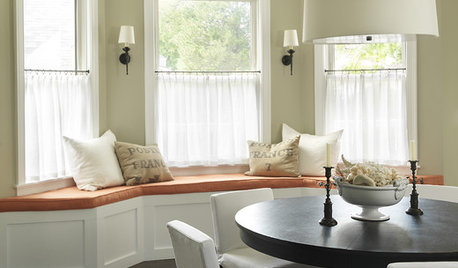
DECORATING GUIDESThe Case for In-Between Colors
These mutable hues defy easy description, but their appeal all around the home isn't hard to get
Full Story
FALL GARDENING9 Deer-Resistant Flowering Shrubs to Plant This Fall
These exquisite shrubs will attract your attention but won’t tempt the deer that roam your neighborhood at night
Full Story
GARDENING GUIDES8 Deer-Resistant Elegant Evergreen Shrubs to Plant This Fall
Who knew that such beautiful shrubs could be deer-resistant?
Full Story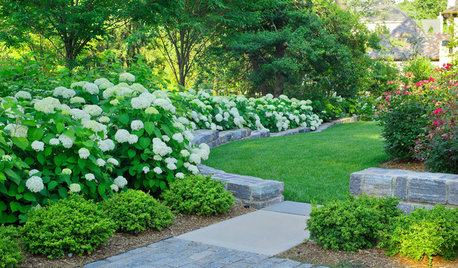
FLOWERS AND PLANTS10 Essential Shrubs for Mid-Atlantic Gardens
Easy-to-grow mid-Atlantic native shrubs celebrate the character of the region
Full Story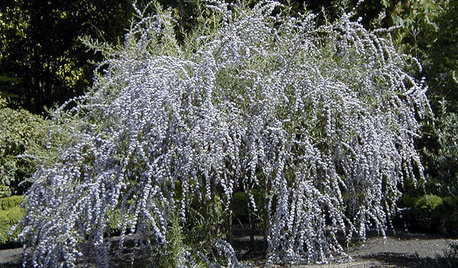
GARDENING AND LANDSCAPINGVase Shapes Set Shrubs Apart
Billowing on top and slender on the bottom, shrubs in a vase shape showcase blooms and foliage to perfection in the landscape
Full Story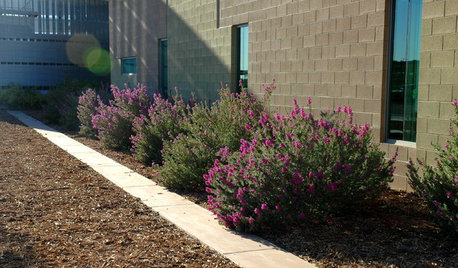
GARDENING GUIDESHow to Avoid Overcrowded, Overpruned Shrubs
Go for a more natural look that’s easier and less expensive to maintain by giving your plants the right amount of growing room
Full Story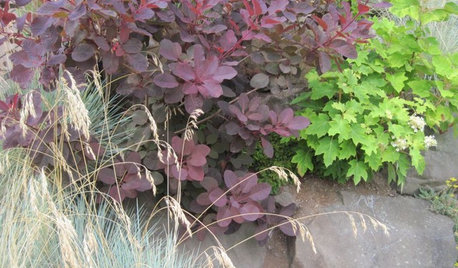
PURPLE FOLIAGE5 Purple-Leaf Majesties of Shrubs
Looking for beautiful depth and dynamism in your landscape? Just add purple
Full Story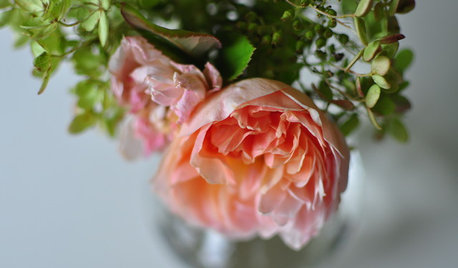
GARDENING GUIDESRoses: Crowning Touch of Gardens
Whether you're the Miss or Mister America of gardening or take a hands-off approach, roses can be a winning addition to your landscape
Full Story
GARDENING GUIDESWhat Kind of Roses Should You Grow?
Want to add the beauty of roses to your garden? Find out which ones, from old-fashioned to modern, are right for you
Full Story
PLANTING IDEASGreat Garden Combo: Rose + Clematis for Small-Space Impact
We all need somebody to lean on. And when a rose supports a climbing vine, the results can totally transform a small garden
Full Story







jacqueline9CA